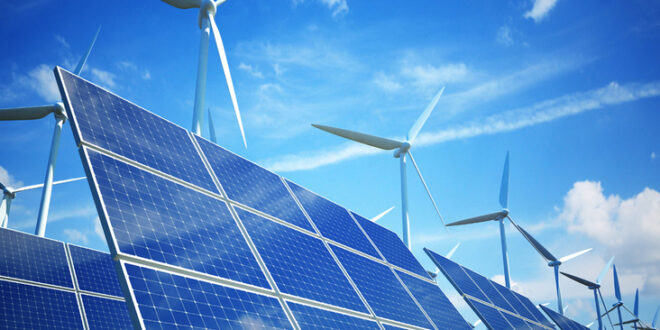The capacity of Iran’s renewable power plants has reached 1,088.18 megawatts (MW), the country’s Energy Ministry announced.
Based on the Energy Ministry data, of the mentioned total capacity, 364.89 MW is supplied by wind power plants, 465.65 MW is provided by solar power plants, 99.47 MW is supplied by small hydroelectric power plants, and 12.5 MW is provided by biomass plants.
Turbo expanders or expansion turbines also account for 9.6 MW, and branching accounts for 136.07 MW of the country’s total renewable capacity.
Renewables, including hydropower, account for nearly seven percent of the country’s total energy generation, versus natural gas’ 90 percent share.
Last week, Iran’s National Development Fund (NDF) and Renewable Energy and Energy Efficiency Organization (SATBA) signed a memorandum of understand (MOU) worth $5 billion for financing renewable power plant projects belonging to non-governmental public institutions.
The MOU was inked by NDF Deputy Head Alireza Mir-Mohammad Sadeqi and SATBA Head Mahmoud Kamani in a ceremony at the place of NDF.
Financing for the construction of renewable power plants up to a ceiling of five billion dollars (within two years) will be carried out by the National Development Fund, and includes the use of other methods for supplying resources based on the statutes and regulations of the NDF.
Addressing the signing ceremony of the MOU, NDF Head Mehdi Ghazanfari said that although there are some financial arrears in fossil power plants to the National Development Fund, the successful collaboration of this fund with the Ministry of Energy in the construction of renewable power plants can even exceed agreements amounting to more than $5 billion in the future.
Mahmoud Kamali, the head of SATBA, for his part, referred to concerns about future electricity supply shortages and the effectiveness of such plans, and said: “Network capacity, electricity generation, and power plant fuel supplies are limited. Therefore, the development of renewable power plants, in addition to promoting sustainable network development, can help overcome challenges in fuel supply and fossil fuel production.”
He added that the main issue with the electricity network is financing, and with the cooperation of the National Development Fund and foreign and domestic currency facilities, this problem can be solved.
Last month, an official with the SATBA said that the development of renewable power plants in Iran has accelerated since the current government administration took office in August 2021.
According to Ali Shab-Navard, the Energy Ministry in the 13th government has defined new investment packages and strategies to attract more capital to fund new renewable projects across the country.
“Different investment models in the 13th government have been a good incentive for investing in this sector,” the official said.
The mentioned measures led to the capacity of the country’s renewable power plants reaching 1,085 megawatts, which is a very good figure, he added.
Back in July, SATBA Head Mahmoud Kamani said the capacity of renewable power plants is increasing regularly and daily in the country.
Putting the under-construction power plants into operation will further increase this capacity, Kamani said.
Iranian Energy Ministry has put it on the agenda to add 10,000 MW to the capacity of the country’s renewable power plants by the end of the current government administration (August 2025).
In January 2022, the Energy Ministry and some of the country’s private contractors signed memorandums of understanding (MOU) for cooperation in the construction of new renewable power plants across the country.
Earlier in April, the head of SATBA announced the construction of 110,000 solar power plants with a capacity of five kilowatts (KW) for low-income groups in the current Iranian calendar year (began on March 21).
Kamani also announced that the tender for the construction of solar power plants with a capacity of 2,200 megawatts, left over from the plan for the construction of solar power plants with 4,000 megawatts capacity in the past year, will be also held this year.
Regarding the follow-up of the construction of renewable power plants in the current year, the official said that a plan for the construction of renewable power plants was announced by the minister of energy at the beginning of the 13th government, and in 1401 (past Iranian year), the necessary preparations for the implementation of this plan have been followed up and some measures have been taken in this due.

 Iran Energy News Oil, Gas, Petrochemical and Energy Field Specialized Channel
Iran Energy News Oil, Gas, Petrochemical and Energy Field Specialized Channel



